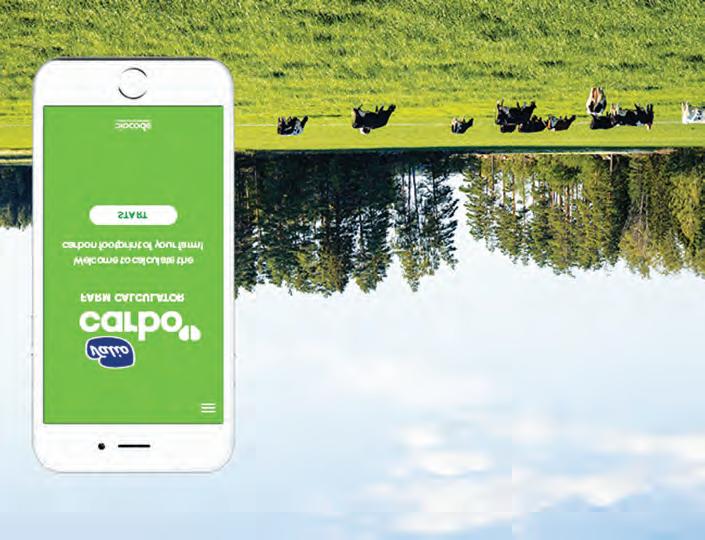S05 AF March_April 2020 Livestock_Layout 1 13/03/2020 15:21 Page 12
LIVESTOCK
Dairy manufacturers are looking at innovative ways to measure and lower the carbon emissions from their farms.
Reducing the carbon footprint of milk
Using Valio’s calculator, emissions reductions can be measured and verified at the farm level. Valio, Finnish manufacturer of dairy products, has unveiled a calculator for the farms to measure own carbon emissions Using the calculator, emissions reductions can be measured and verified at the farm level.The methodology behind the tool is certified by global climate and sustainability experts, the Carbon Trust. Finnish cows’ methane emissions per litre of milk have halved in 50 years as a result of improved animal productivity, health, and nutrition. Cows today can produce more milk with the same amount of feed. Despite this development, the climate impact on Finland is still significant. Actions reducing emissions are savings actions. Rami Rauhala and his wife Johanna
12 African Farming - March/April 2020
Image Credit: Valio
E
MISSIONS FROM MILK production can be reduced in many ways. One of the most important methods is carbon farming that maximises the carbon sequestration capacity of fields. The carbon footprint decreases by increasing the per-hectare harvest of grass for feeding cows. Cow welfare has a big climate impact. Emissions per litre of milk are reduced when cows live longer and produce milk well. The proper handling of manure reduces emissions: tilling manure into the soil rather than spraying it reduces nutrient runoff, and less industrial fertilizers are needed. Some dairy farms are already using their own biogas plants. The energy they produce from manure can be used to heat the farm and to power the milking equipment, for example. Over the decades, Finnish dairy farms have done a lot of work to reduce their carbon footprint. The global average carbon footprint of raw milk is currently 2.5 CO2e per litre. In Finland, the figure is estimated around one CO2e per litre.
Using the calculator, emissions reductions can be measured and verified at the farm level.
operate a 65-cow dairy farm in Sievi, western Finland. The carbon footprint of the Hilliaho dairy farm was calculated as part of the work to develop the calculator. Climate-smart milk production is also resource-efficient, that is, it makes good sense economically. Most of the fields on our farm are either grass silage or grazing pastures. We have also over-seeded to make the vegetation as thick as possible. In our area, the significance of reparcelling is also big. Parcels that have over time become fragmented have been reparcelled into feasible parcels among landowners. When fields are closer to the farm centre, tractors use less fuel. It has been great to notice that we, milk producers, are part of the solution to climate change. Valio’s goal is that all its farms are using the tool within the next five years. So far, data has been collected from 100 farms. “We have scheduled a training roadshow for dairy farms and we are providing them with online support, too. The calculator is easy to use and the farmers already have most of the data at hand. I estimate that the
average farm can lower its emissions by 30 percent by 2025. At the same time, we are of course working to reduce emissions from Valio’s factories, transportation and in packaging,” said Aleksi Astaptsev, Valio’s scientist who developed the calculation model. Milk production and emissions As global warming becomes an increasingly alarming issue, reducing the environmental impact of imapct of carbon emissions is of utmost urgency. Cows convert the energy and nutrients in grass into and its price is the methane that is generated in the animal’s rumen. Most of milk production’s emissions are created in the cow’s rumen as well as in manure storage. The second largest share of the carbon footprint is generated in feed production, which releases nitrous oxide. The carbon dioxide generated in different stages of the production chain, such as in energy production for factors and in transportation, also play a role in the carbon footprint. h
www.africanfarming.net






